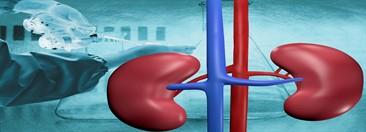What is transplantology?
Transplantology is a branch of medicine that studies issues related to organ transplantation, as well as the prospect for artificial organ creation in the future.
What does every patient need to know about transplantology?
Basic terms:
- Donor – is an organism from which organs or tissues are taken for transplantation.
- Recipient – is an organism to which tissues or organs are transplanted.
- Transplantation, which comes from the Latin 'transplantare' (to transfer into place), can replace organs or tissues which are missing or which have been irreversibly damaged by a pathological process. Areas possible to transplant include the kidney, heart, liver, lungs, bone marrow, hematopoietic stem cells, hair and many others.
What are the types of transplantation?
The following types of transplantation are distinguished:
- Autotransplantation, also known as autologous transplantation, is the process of a transplant when the donor and the recipient are one and the same person. For example, it is autotransplantation when skin from intact areas is transplanted to damaged areas in cases of severe burns. Autotransplantation can also be performed with bone marrow or hematopoietic stem cells following high-dose antitumor chemotherapy treatments for leukemia, lymphoma, and other malignant tumors.
- Isotransplantation, or isogenic transplantation, is when the transplant donor is the recipient's identical twin, meaning that the two are genetically and immunologically identical. Such operations are rare, as the number of identical twins is small, and because twins often suffer from similar chronic diseases.
- Allotransplantation, or homotransplantation, is when the human transplant donor is genetically and immunologically different to the recipient. This is the case for most human-to-human transplantations. It is possible to take organs from the recipient's relatives, but they may also be found elsewhere.
- Xenotransplantation, otherwise known as inter-species transplantation, involves organ transplantation from an organism of another biological species, such as from an animal to a human. This method has been applied in an extremely limited extent, but can include the use of 'xeno skins' (i.e. animal skins, such as that of a pig) or the use of cell cultures from a pig's pancreas β-cells.
What medical cases require a transplant operation?
A transplant operation is needed when an organ or body part loses the capability to function normally. This may occur as a result of congenital abnormalities, diseases, serious traumas, or due to lifestyle-related organ failure (as in kidney transplantation due to alcohol-related illnesses). Additionally, burn victims often have skin transplants to help with their skin damage.
What are the medical requirements for carrying out of a living-donor transplantation?
Donor’s and recipient’s health
- Only an organ or tissue which won't induce irreversible health disorders when removed can be taken from the donor. Aside from this, the organs being transplanted must be intact, healthy and physiologically functioning well.
- The recipient's health must be stable before the operation.
Compatibility of donor and recipient
Before the operation, the donor and recipient immune system data is carefully studied and compared to establish compatibility to prevent a rejection reaction and other possible complications.
Currently, donor selection is performed based on two main antigen systems:
- Compatibility according to the AB0 system (erythrocyte antigens). When transplanting organs an optimal matching of donor’s and recipient’s blood group according to the AB0 system is important. Incompatibility according to the AB0 system is also acceptable.
- Compatibility according to the HLA system (leucocyte antigens, known as histocompatibility antigens)
- HLA antigens compatibility is considered to be determinative when selecting a donor.
What a rejection reaction means
Rejection is an inflammatory reaction to a transplanted organ caused by a negative response of the recipient's immune system to the donor's transplantation antigens.
Despite all the measures taken to select the most genetically well-matched donor for each recipient, it is not possible to achieve a complete genotype match. As a result, recipients may experience a rejection reaction after operations. When performing autotransplantation operations, the danger of a rejection reaction is low, and the more compatible the recipient and the donor are, the less frequently rejection occurs.
How are rejection reactions prevented?
Immunosuppression
To prevent organ rejection after transplantation, a pharmacological/ medical immunosuppression is performed on the recipient to reduce the efficacy of the immune system. In an uncomplicated case, this requires only relatively small doses of drugs to be taken to a special schedule. However, should graft-versus-host disease progress, the dosage of immunosuppressive agents will be significantly increased, or their combination altered.
Patients should remember that the process of immunosuppression leads to a significantly higher risk of postoperative complications related to infections.
The body's natural rejection reaction will be suppressed by the drugs. The recipient patient will likely remain under a physician's care for the rest of their lives.
Which organs and tissues can be transplanted?
It is theoretically possible to transplant any organ, but in reality the possibilities are more limited than this. Types of possible transplants include:
- Kidney transplantation
- Liver transplantation
- Heart transplantation
- Pancreas transplantation
- Bone marrow transplantation
- Skin transplantation
- Lung transplantation
Currently, it is mainly the transplantation of the liver, kidney, heart, lung and pancreas that is performed, as well as the transfer of the endocrine gland's tissue, cell cultures, and bone marrow.



